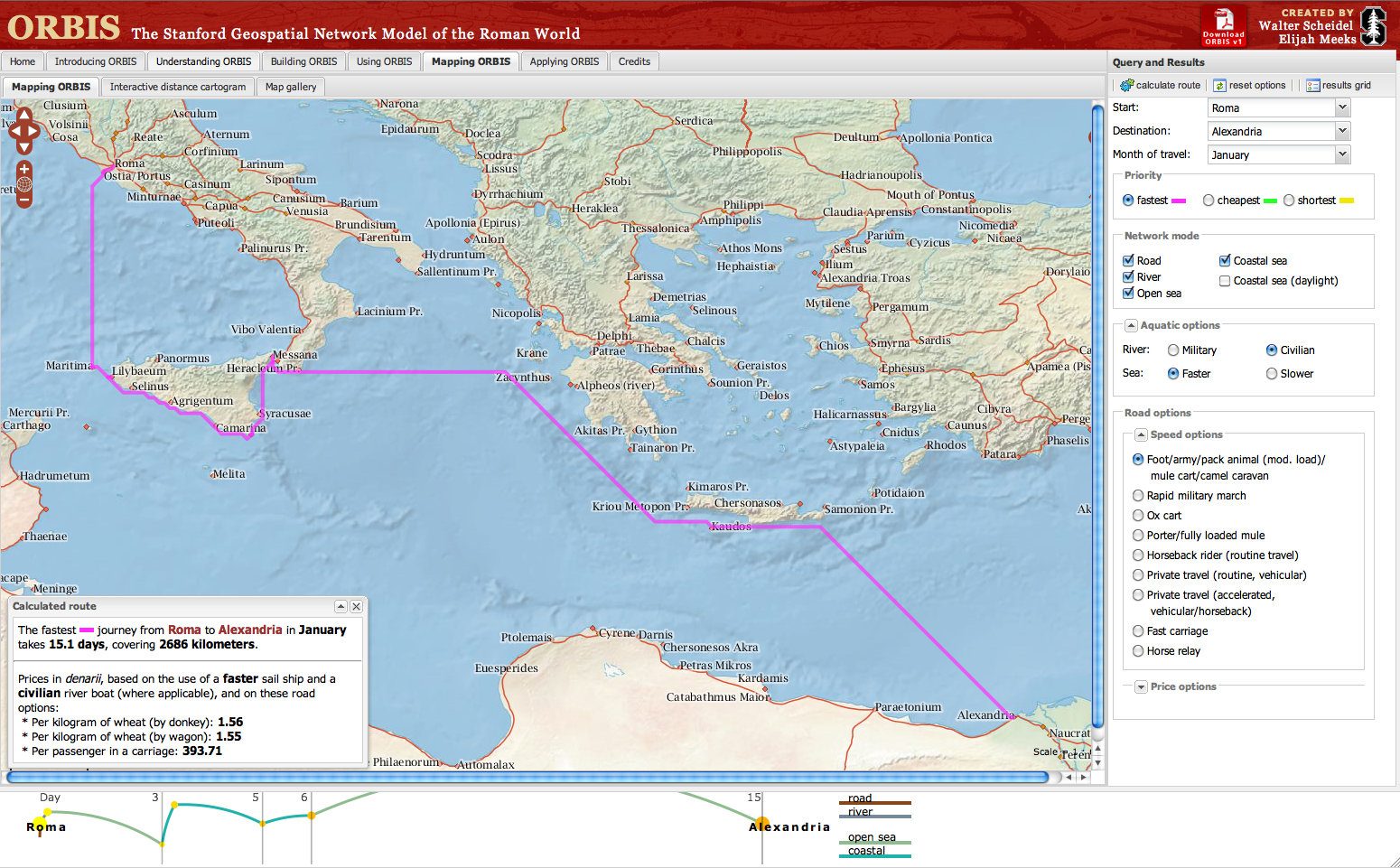ORBIS The Stanford Geospatial Network Model of the Roman World, “allows us to express Roman communication costs in terms of both time and expense. By simulating movement along the principal routes of the Roman road network, the main navigable rivers, and hundreds of sea routes in the Mediterranean, Black Sea and coastal Atlantic, this interactive model reconstructs the duration and financial cost of travel in antiquity.
Conventional maps that represent this world as it appears from space signally fail to capture the severe environmental constraints that governed the flows of people, goods and information. Cost, rather than distance, is the principal determinant of connectivity.”
Jasmine Pui writes, for History Today: “The first resource of its kind, ORBIS offers comprehensive graphic tools to portray the transport and communication infrastructure that underpinned the Roman Empire’s existence. […] An ORBIS visitor can traverse over 84,631 kilometres of road, including desert tracks, and 28,272 kilometres of rivers and canals, using 14 modes of road travel from camel caravan to military march and accurate, normative sailing times.”


